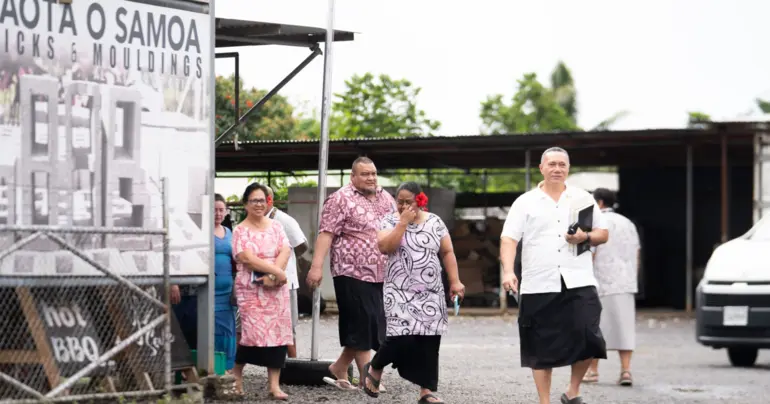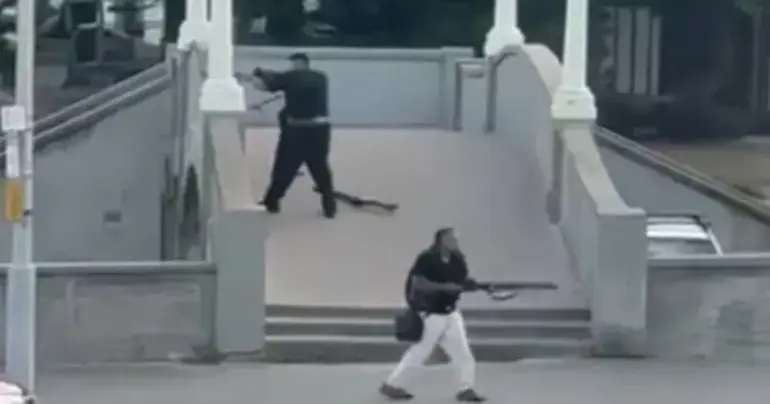'Reasonable' force too subjective for school
 By The Editorial Board
•
03 August 2020, 11:52PM
By The Editorial Board
•
03 August 2020, 11:52PM
Just 18 months since the passage of a bill allowing teachers the power to inflict “reasonable force” upon their students in schools we saw on the front page of Monday’s Samoa Observer, more graphic evidence of the policy’s failings.
We saw a picture that was a terrible reminder of the pitfalls of institutionalising violence against children in schools and giving teachers, not parents, the right to determine what constitutes reasonable punishment (“Principal fined for assaulting six students”).
Six students were ultimately punished by being struck with a short length of hose. Five were struck across their buttocks in instances of what the court found amounted to assault. A sixth student, a picture of whose injuries were run on the front page of the newspaper, was struck repeatedly and had suffered from what the court had found was actual bodily harm.
One of the children did not even attend the school of which the Principal administering the punishment was in the charge.
The children’s misbehaving? Posting photos of themselves on Facebook in school uniform.
The decision that this behaviour was equal to the behaviour of the student in question, the nature of the punishment and the instrument used to dispense it are all examples of the problems of corporal punishment in schools.
The current policy allowing for teachers to strike children affords educators immense latitude in determining what constitutes reasonable punishment and what behaviour merits physical punishment.
When it comes to matters so subjective as children’s behaviour and reasonable force, this leeway almost makes certain that children will be disciplined for the wrong reasons and in the wrong ways.
Corporal punishment in schools has been phased out of schools worldwide as education systems modernise. A total of nearly 130 countries have outlawed its use,
Samoa, too, had followed this trend.
It was only last February that a bill was passed allowing teachers the chance to use “reasonable force” on their students.
The Minister of Education Sports and Culture, Loau Keneti, anticipated the possible shortcomings of the law when he said that teachers would be trained in remaining within the fine line between dispensing discipline and assaulting students.
But it is clear that no amount of promised workshops can guarantee that teachers will take a standard view on these questions.
We do not know what the sixth child had done to merit being punished more severely than his cohorts.
But it is highly unlikely that posting more online photos than his school colleagues was a good reason for him to receive a beating that resulted in the graphic welts that were left across his back.
Judge Loau Donald Kerslake identified problems at the heart of the policy when fining the Principal $200 for her crimes.
The District Court Judge spoke to the heart of the policy’s shortcomings when he noted that determining reasonable punishment in the context of a teacher-student relationship is an area that can be fraught by misinterpretation.
“It is undisputed that an object [a hose] was used by the accused when committing the offences on the victims,” the Judge said.
“In essence, the mere use of an object in inflicting punishment on the victims immediately disqualifies her actions as falling within the [definition] of “reasonable force.
By leaving this question of reasonable punishment up to teachers themselves, we are leaving our schools open to the inconsistent application of the law.
Attitudes towards what constitutes reasonable physical discipline and bad behaviour vary greatly between people. Some believe that there is no moral justification for striking a child, while others recall receiving sasa (physical discipline) at school and say that it did them no permanent harm.
In just 18 months since the amendment was passed, this is not the first time that serious problems have arisen from teachers’ choice of instrument for dispensing punishment.
Late last year, a Principal was reported to the Education Ministry for allegedly having used a piece of plastic piping to strike a child.
This means that some students are receiving punishments that far exceed that given to others. An important principle of equality, especially as it concerns punishment, is being breached.
When the amendment was first passed it was met with condemnation from important voices in Samoan society.
The then-Acting Chief Justice and Supreme Court Justice, Vui Clarence Nelson, described the amendments as “a retrograde step”.
The Ombudsman, Maiava Iulai Toma, said that more time needed to be given to the human rights implications of the law.
“There has been an increasing number of teachers being brought before the courts because of assault,” he said.
The Samoa Victim Support Group also opposed the bill, saying it will expose children to violence from teachers.
It is unclear that the corporal punishment law, which was at the time partly justified by the need to discourage students from becoming involved in violent behaviour outside of school grounds, is achieving its aims.
Exposing children to violence from their teachers has not been found to be an effective means of making them less violent. In fact, one study looked at more than 88 different studies into the effects of hitting children; its main conclusion was that the most likely lasting effect of physical punishment was to perpetuate a cycle of violence.
Ultimately, though, the introduction of corporal punishment in schools removes the rights of parents over disciplining their own children.
Parents know their children’s patterns of behaviour best and what kinds of punishments they can take and how they will respond to them. This is a right that they should not be stripped of.
 By The Editorial Board
•
03 August 2020, 11:52PM
By The Editorial Board
•
03 August 2020, 11:52PM










